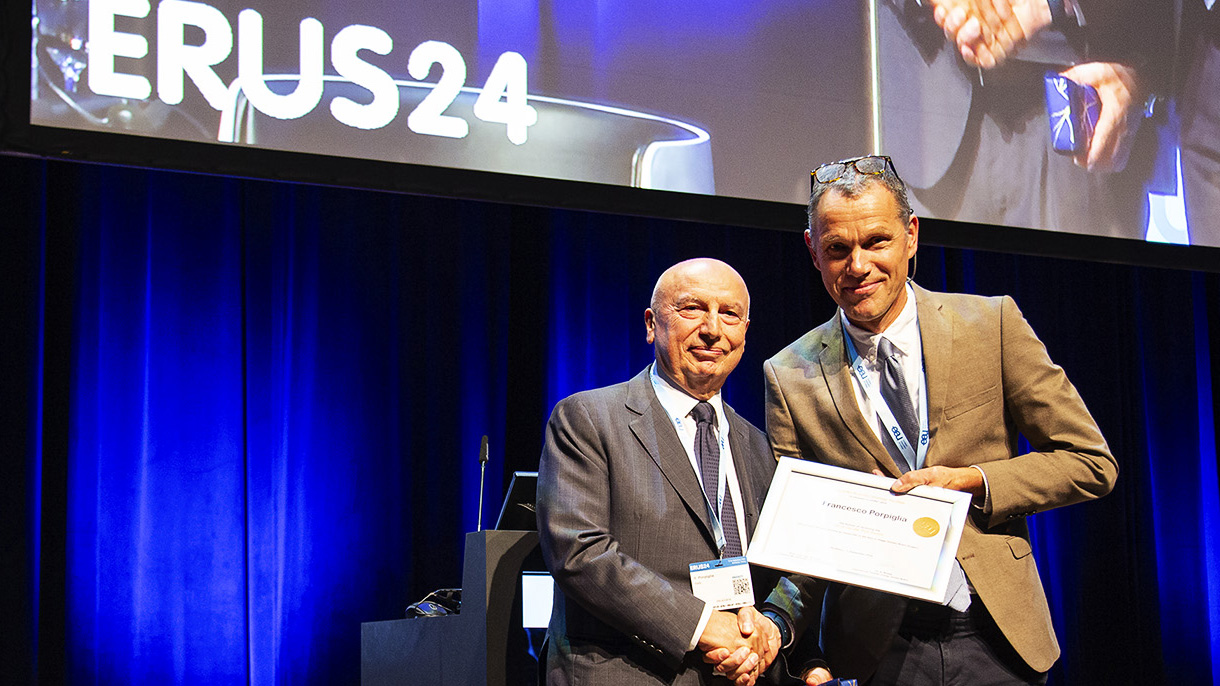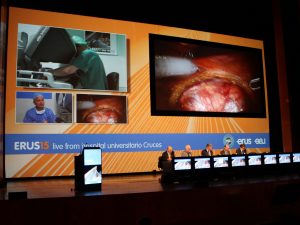“Urologists have to be prepared to face non-urological procedures and can learn a lot from other specialties in use of the surgical robot.” This was one of the key messages of the non-urological semi-live session on the third day of ERUS16. We spoke to Prof. Giorgio Guazzoni, who moderated the session together with Prof. José Gregorio Pereira Arias.
The third day of ERUS16 featured three live surgery sessions, two semi-live sessions (a first for ERUS) and a state-of-the-art session. The session on non-urological robotic surgery featured talks on hernia repair, bowel surgery, hysterectomy and cholecystectomy and the repair of bile duct/hepatic damage.
Learning from each other
When asked if urologists could benefit from observing other surgeons’ robotic procedures, Prof. Guazzoni was adamant: “It’s important for urologists to be informed. During our own surgery we can encounter problems like hernia repair, bowel resection or some gynaecological issues. These can be unexpected repairs following complications, but in some cases are part of the urological procedure or are simply performed together with the prostatectomy, like some hernia repairs.”
“I like to learn with other specialists, like general surgeons. They open our minds and change attitudes. One can get used to just seeing other urologists at work, and by seeing other fields and their approaches and techniques, you can learn a lot. This includes things like techniques, how to perform certain repairs, use of the stapler, and so on.”
The presentations during the session mentioned many of the same benefits of robot use that urologists have experienced, like enabling less invasive surgery, a shorter hospital stay and ergonomic benefits for the surgeon. The other side of the coin is the relative cost of the procedure, a constant in all disciplines.
“It’s difficult to draw conclusions,” Guazzoni said. “Cost is important, but placed against the safety of the procedure, the shorter hospital stay and lower rates of complications, I think you can’t put a price on these matters.”
Increasingly multidisciplinary robots
In other presentations earlier in the ERUS16 programme, trends were presented that showed that urologists were no longer the primary users of medical robots, finding themselves in second or even third place behind surgeons like gynaecologists. Does no longer being the primary “customer” of surgical robots pose concerns for urologists?
“We have probably been helping enlarge the number of surgeons interested in robotic surgery. The new XI robot helps as well, as this is a system that was made for general surgeons. Intuitive is probably keen to “conquer” all surgeons, not just urologists. This is also positive for us, we don’t want to be the sole users.”
Guazzoni pointed out that the newer robots are multifunctional, even multidisciplinary. He does not think that this is a drawback for urologists, on the contrary: “I think multifunctional is better, also for urologists. We might perform urological procedures but also deal with bowel and vascular problems. The multidisciplinary machine helps us help our patients better.”





